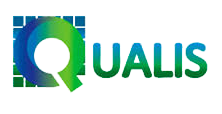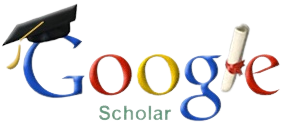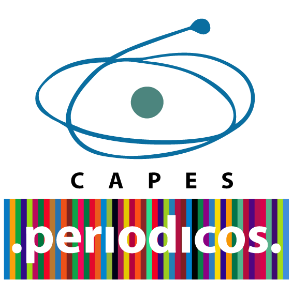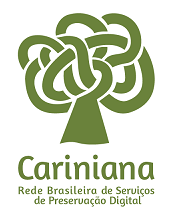Evolution of markup languages: a brief history in light of information science
DOI:
https://doi.org/10.5433/2317-4390.2017v6n2p20Keywords:
Information Technology, Markup Languages, Data Modeling, Information Representation, Semantic WebAbstract
Introduction: The so-called Markup Languages have always been directly related to the professional practices identified in the field of Information Science, from the development of the Web environment, such technologies have gained greater prominence, boosting the creation of a wide variety of applications with different characteristics and purposes.
Objective: To present a compendium of the evolution of markup languages, analyzing such technologies under the focus of Information Science and describing the concepts and characteristics of the main languages used in the area.
Methodology: Review of literature on the evolution of markup languages from the perspective of information science, qualitative approach of applied nature.
Results: The article presents a brief review on the evolution of markup languages, contributing to a greater discussion of this topic in the area of Information Science, in order to favor a better understanding of these technologies, their reflexes and applications in the area of Science of Information.
Conclusion: It was verified that currently XML is tha language with presents a greater number of applications in the daily life of information professionals, impelling great advances in the area, however, RDF is still little explored, evidencing the need for a better understanding of the evolution of the languages of marking and underlying concepts, so that such technologies are not developed from a 'conceptual vacuum', with the sole objective of meeting market demands, for such technologies to be properly consolidated in the theoretical field.
Downloads
References
ALESSO, H. P.; SMITH, C. F. Developing Semantic Web services. Massachusetts: A K Peters, Ltd, 2005.
ALMEIDA, M. B. Uma introdução ao XML, sua utilização na internet e alguns conceitos complementares. Ciência da Informação, Brasília, v. 31, n. 2, p. 5- 13, maio/ago. 2002.
BAX, M. P. Introdução às linguagens de marcas. Ciência da Informação, v. 30, n. 1, p. 32-38, 2001. Disponível em: http://www.brapci.ufpr.br/brapci/v/a/650. Acesso em: 11 set. 2016.
BISCHOF, S.; DECKER, S. ; KRENNWALLNER, T.; LOPES, N. Mapping between RDF and XML with XSPARQL. 2011. Disponível em: http://link.springer.com/article/10.1007/s13740-012-0008-7. Acesso em: 11 fev. 2017.
DAUM, B.; MERTEN, U. Arquitetura de sistemas com XML: conteúdo, processo e apresentação. Rio de Janeiro: Campus, 2002, p. 43-48.
EDWARDS, M. XML: data the way you want it. [S. l.]: Microsoft, 1997.
FURGERI, S. O papel das linguagens de marcação para a Ciência da Informação. TransInformação, Campinas, v. 18, n. 3, p. 225-239, set./dez. 2006. Disponível em: http://periodicos.puccampinas.edu.br/seer/index.php/transinfo/article/view/670. Acesso em: 18 mar. 2017.
HEITLINGER, P. O guia prático da XML: conceitos, exemplos, prática e aplicações da linguagem universal. 2001. Disponível em: http://www.centroatl.pt/titulos/tecnologias/imagens/oguiapraticoda-xml-excerto.pdf. Acesso em: 25 ago. 2016.
HICKSON, I. et al. HTML5: a vocabulary and associated APIs for HTML and XHTML.W3C Recommendation. 2014. Disponível em: https://www.w3.org/TR/html5/single-page.html. Acesso em: 21 jan. 2016.
KLYNE, G.; CARROLL, J. J. Resource Description Framework: concepts and abstract syntax. W3C recommendation. 2004. Disponível em: http://www.w3.org/TR/2004/REC-rdf-concepts-20040210. Acesso em: 15 set. 2015.
KONTOPOULOS, E.; KRAVARI, K.; BASSILIADES, N. Object-Oriented modeling of RDF schema ontologies. 2007. Disponível em: http://lpis.csd.auth.gr/publications/pci2007-kontopo_et_al.pdf. Acesso em: 24 jan. 2017.
LASSILA, O; SWICK, R. Resource Description Framework (RDF): model and syntax specification. W3C Recommendation. [S.l. : s.n.],1999. Disponível em: https://www.w3.org/TR/1999/REC-rdf-syntax-19990222/. Acesso em: 09 mar. 2017.
MARCONDES, C. A. HTML 4.0 fundamental: a base da programação para a web. 2. ed. São Paulo: Érica, 2007.
MILLER JUNIOR, R. Teoria e problemas de XML. Porto Alegre: Bookman, 2003.
MORENO, F. P.; BRASCHER, M. MARC, MARCXML e FRBR: relações encontradas na literatura. Informação & Sociedade: Estudos, João Pessoa, v.17, n.3, p. 14-16, 2007. Disponível em: http://www.ies.ufpb.br/ojs2/index.php/ies/article/view/834/1582.Acesso em: 07 abr. 2015.
OPARA, E.; SRIVASTAVA, M. Extensible Markup Language: an enterprise integration web delivery system. Communications of the IIMA, v. 3: n. 2, p. 5, 2003. Disponível em: http://scholarworks.lib.csusb.edu/ciima/vol3/iss2/5. Acesso em: 12 fev. 2017.
RAMALHO, R. A. S. Web Semântica: aspectos interdisciplinares da gestão de recursos informacionais no âmbito da Ciência da Informação. 2006, 120 f. Dissertação (Mestrado em Ciência da Informação) - Faculdade de Filosofia e Ciências, Universidade Estadual Paulista, Marília, 2006.
RAMALHO, R.A.S. Análise do Modelo de Dados SKOS: Sistema de Organização do Conhecimento Simples para a Web. Informação & Tecnologia (Itec), v. 2, p. 66-79, 2015.
SILVEIRA, D. T.; CÓRDOVA, F. P. A pesquisa científica. In: GERHARDT, T. E.; SILVEIRA, D. T. (Orgs.). Métodos de pesquisa. Porto Alegre: Editora da UFRGS, 2009.
SENGUPTA, A.; DILLON, A. Extending SGML to accommodate database functions: a methodological overview. Journal of the American Society for Information Science, v. 48, n. 7, p. 629-637, 1997. Disponível em: http://hdl.handle.net/10150/105183. Acesso em: 17 fev. 2017.
TEIXEIRA, E. C. Utilizando XML para publicação de dados multimídia na Web. 2002. 77 f. Dissertação (Mestrado em Ciência da Computação) - Universidade Federal de São Carlos, São Carlos, 2002. Disponível em: https://repositorio.ufscar.br/handle/ufscar/527. Acesso em: 15 jan. 2017.
Downloads
Published
How to Cite
Issue
Section
License
Copyright (c) 2017 Informação@Profissões

This work is licensed under a Creative Commons Attribution 4.0 International License.
A revista se reserva o direito de efetuar, nos originais, alterações de ordem normativa, ortográfica e gramatical, com vistas a manter o padrão culto da língua e a credibilidade do veículo. Respeitará, no entanto, o estilo de escrever dos autores. Alterações, correções ou sugestões de ordem conceitual serão encaminhadas aos autores, quando necessário.
O conteúdo dos textos e a citação e uso de imagens submetidas são de inteira responsabilidade dos autores.
Os trabalhos publicados passam a ser propriedade da revista Informação& Profissões, ficando sua reimpressão total ou parcial sujeita a autorização expressa da revista. Em todas as citações posteriores, deverá ser consignada a fonte original de publicação, no caso a Informação&Profissões.












